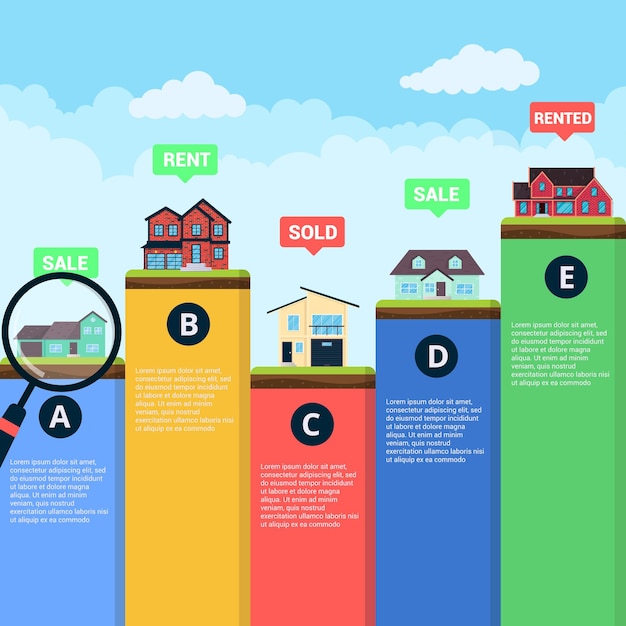Maximize SNAP Benefits in 2025: Expert Tips for Food Security

Maximize SNAP Benefits in 2025 by understanding eligibility, reporting changes correctly, utilizing deductions, exploring state-specific programs, and leveraging community resources to ensure food security.
Are you looking for ways to **maximize your SNAP benefits in 2025**, ensuring you and your family have access to nutritious food? This guide provides expert tips and strategies to help you navigate the SNAP program effectively and enhance your food security.
Understanding SNAP Eligibility and Basic Benefits
The Supplemental Nutrition Assistance Program (SNAP) is a federal program designed to combat food insecurity by providing low-income individuals and families with financial assistance to purchase groceries. Understanding the eligibility criteria and how basic benefits are calculated is crucial for maximizing your SNAP benefits.
Eligibility Criteria for SNAP
To be eligible for SNAP, you generally need to meet certain income and resource requirements. These requirements can vary by state, but they typically include factors such as:
- Gross monthly income: Must be at or below 130% of the poverty line.
- Net monthly income: Must be at or below the poverty line.
- Resource limits: Typically, $2,500 for households without an elderly or disabled member, and $3,750 for households with an elderly or disabled member.
Additionally, work requirements may apply to certain individuals, mandating that they are actively seeking employment or participating in a work program.

How Basic SNAP Benefits Are Calculated
SNAP benefits are calculated based on your household size, income, and certain deductions. The formula generally involves:
- Determining your net monthly income by subtracting allowable deductions from your gross monthly income.
- Multiplying your net monthly income by 30%.
- Subtracting the result from the maximum SNAP benefit for your household size.
The resulting amount is your monthly SNAP benefit, which can be used to purchase eligible food items at authorized retailers.
Understanding your eligibility and how benefits are calculated allows you to better plan your food budget and seek assistance if your circumstances change. Regular reviews of your case with your local SNAP office can also ensure you receive the maximum benefits you are entitled to.
Accurate Reporting and Avoiding Common Pitfalls
Accurate reporting is essential to receiving the correct SNAP benefits and avoiding potential complications. Common mistakes in reporting can lead to overpayments, underpayments, or even termination of benefits. Understanding what to report and how to do it can help you maintain your SNAP assistance smoothly.
What Changes to Report Immediately
It is critical to report any changes that may affect your eligibility or benefit amount promptly. These changes typically include:
- Changes in income: Any increase or decrease in earnings from employment, self-employment, or other sources.
- Changes in household size: Additions or removals of household members.
- Changes in address: Moving to a new residence, as this can affect eligibility based on state-specific rules.
- Changes in resources: Significant increases in assets, such as receiving an inheritance.
Reporting these changes promptly ensures that your benefits are adjusted accurately and prevents potential issues down the line.
Common Reporting Mistakes and How to Avoid Them
Several common reporting mistakes can lead to complications with your SNAP benefits. These include:
- Delaying reporting: Waiting too long to report changes can result in overpayments or underpayments.
- Inaccurate information: Providing incorrect details about income, household size, or resources.
- Misunderstanding reporting requirements: Not fully understanding what changes need to be reported.
To avoid these mistakes, maintain clear records of your income and household information, and communicate any changes to your SNAP office as soon as they occur. Proactive communication and attention to detail can help prevent issues and ensure you receive the correct benefits.
Ensuring accurate and timely reporting is vital for maintaining your SNAP benefits. By staying informed and proactive, you can avoid common pitfalls and ensure you receive the assistance you need.
Maximizing Deductions to Increase Your SNAP Benefits
Deductions can significantly impact the amount of SNAP benefits you receive. Understanding and utilizing all eligible deductions can help increase your monthly assistance. These deductions are designed to account for necessary expenses that reduce your available income.
Understanding Allowable Deductions
Several types of deductions can be applied to your gross income to determine your net income, which is used to calculate your SNAP benefits. These include:
- Standard deduction: A fixed amount that varies by state.
- Earned income deduction: Subtracts 20% of your earned income.
- Dependent care deduction: Covers the cost of childcare needed for work or training.
- Medical expense deduction: For elderly or disabled individuals, unreimbursed medical expenses exceeding $35 per month can be deducted.
- Excess shelter deduction: Covers housing costs that exceed half of your household’s income, including rent, mortgage payments, and utility bills.
By understanding and documenting these deductions, you can significantly reduce your countable income and increase your SNAP benefits.
How to Claim These Deductions Effectively
To claim these deductions effectively, you need to:
- Keep detailed records: Maintain receipts and documentation for all eligible expenses, such as medical bills, childcare costs, and housing expenses.
- Report accurately: Ensure that all deductions are accurately reported on your SNAP application or during periodic reviews.
- Communicate with your SNAP office: Ask questions and seek clarification from your SNAP caseworker to ensure you are claiming all eligible deductions.
Proactive management of your deductions can result in a higher SNAP benefit amount, providing additional resources for purchasing nutritious food.

Maximizing deductions is a crucial step in increasing your SNAP benefits. By understanding the available deductions and documenting your expenses, you can ensure you receive the maximum assistance you are entitled to.
Navigating State-Specific SNAP Programs and Variations
SNAP is a federal program, but each state has some flexibility in how it administers the program. Understanding state-specific programs and variations can help you take full advantage of available resources. These variations can include different eligibility criteria, additional benefits, and unique programs designed to meet local needs.
Exploring State-Specific SNAP Initiatives
Many states offer initiatives that go beyond the standard SNAP benefits. These may include:
- Double Up Food Bucks: Programs that match SNAP benefits spent at farmers markets and participating grocery stores, encouraging the purchase of fresh, local produce.
- Restaurant Meals Program: Allows elderly, disabled, and homeless individuals to use SNAP benefits at participating restaurants.
- SNAP Education Programs: Provides nutrition education and cooking classes to help SNAP recipients make healthy food choices and manage their food budgets.
Researching and participating in these initiatives can significantly enhance your food security and nutritional outcomes.
Understanding Variations in SNAP Administration
States may also have variations in how they administer SNAP, including:
- Eligibility criteria: Some states may have slightly different income or resource limits.
- Reporting requirements: The frequency and methods for reporting changes may vary.
- Application processes: The specific forms and documentation required for SNAP applications can differ.
Being aware of these variations can help you navigate the SNAP program more effectively in your state. Check your state’s SNAP website or contact your local SNAP office for detailed information on state-specific rules and programs.
Navigating state-specific SNAP programs and variations can unlock additional resources and benefits. By staying informed about your state’s unique offerings, you can maximize your SNAP assistance and improve your access to nutritious food.
Leveraging Community Resources and Partnerships
Community resources and partnerships play a vital role in supporting SNAP recipients and enhancing food security. Connecting with local organizations, food banks, and other resources can provide additional assistance and support beyond your SNAP benefits. These partnerships often offer a range of services to help individuals and families meet their food needs.
Connecting with Local Food Banks and Pantries
Food banks and pantries are valuable resources for SNAP recipients. They offer free food assistance to individuals and families in need, supplementing SNAP benefits and providing a safety net during times of hardship. To find local food banks and pantries:
- Visit Feeding America’s website to locate food banks near you.
- Contact your local SNAP office for referrals to food pantries and other food assistance programs.
- Check with local community centers and churches for information on food distribution events and resources.
Utilizing these resources can help stretch your SNAP benefits and ensure you have enough food to meet your family’s needs.
Utilizing Other Assistance Programs
In addition to food banks, several other assistance programs can support SNAP recipients:
- WIC (Women, Infants, and Children): Provides nutrition assistance to pregnant women, new mothers, and young children.
- School Meal Programs: Offers free or reduced-price meals to eligible students.
- Senior Nutrition Programs: Provides meals and nutrition services to elderly individuals.
Combining SNAP benefits with these additional resources can create a comprehensive support system for food security. Contact your local social service agency or community center to learn more about these programs and how to apply.
Leveraging community resources and partnerships can significantly enhance your food security. By connecting with local food banks, pantries, and other assistance programs, you can supplement your SNAP benefits and ensure you have access to nutritious food.
Planning and Budgeting Strategies for SNAP Recipients
Effective planning and budgeting are essential for maximizing the value of your SNAP benefits. By creating a budget, planning meals, and shopping strategically, you can ensure that your SNAP benefits provide the most nutritious and filling meals possible. These strategies help you make the most of your resources and reduce food waste.
Creating a Budget and Sticking to It
Creating a budget is the first step in managing your SNAP benefits effectively. To create a budget:
- Track your income and expenses: Monitor how much you receive in SNAP benefits and how you spend it on groceries.
- Set realistic goals: Determine how much you can spend each week or month on food.
- Prioritize nutritious foods: Focus on purchasing essential items like fruits, vegetables, lean proteins, and whole grains.
Sticking to your budget requires discipline and planning, but it can help you avoid overspending and ensure you have enough food throughout the month.
Meal Planning and Smart Shopping Tips
Meal planning and smart shopping can help you maximize your SNAP benefits. Consider the following tips:
- Plan meals in advance: Create a weekly meal plan based on your budget and the foods you have on hand.
- Shop with a list: Stick to your shopping list to avoid impulse purchases and stay within your budget.
- Compare prices: Look for sales, discounts, and store brands to get the most for your money.
- Buy in bulk: Purchase non-perishable items in bulk when possible to save money.
- Reduce food waste: Use leftovers creatively and store food properly to prevent spoilage.
By planning your meals and shopping strategically, you can make the most of your SNAP benefits and ensure you have a variety of nutritious foods to enjoy.
Effective planning and budgeting are essential for maximizing the value of your SNAP benefits. By creating a budget, planning meals, and shopping strategically, you can ensure that your SNAP benefits provide the most for your family.
| Key Point | Brief Description |
|---|---|
| 📝 Accurate Reporting | Report income, household, and address changes promptly to avoid issues. |
| 💰 Maximize Deductions | Claim deductions for medical, childcare, and housing costs to increase benefits. |
| 🍎 State Programs | Explore “Double Up Food Bucks” and restaurant meal programs in your state. |
| 🤝 Community Resources | Connect with food banks, WIC, and senior nutrition programs for added support. |
Frequently Asked Questions (FAQ)
▼
SNAP is the Supplemental Nutrition Assistance Program that helps low-income individuals and families buy groceries. Eligibility depends on income, resources, and household size, with specific limits varying by state.
▼
Benefits are calculated based on net monthly income, household size, and allowable deductions. Generally, 30% of net income is subtracted from the maximum SNAP benefit for the household size.
▼
You must report any changes to income, household size, address, and resources. Timely reporting ensures accurate benefits and prevents overpayments or underpayments.
▼
Allowable deductions include the standard deduction, earned income deduction, dependent care, medical expenses (for elderly/disabled), and excess shelter costs. Claiming these can significantly increase your benefits.
▼
Conclusion
By implementing these strategies, SNAP recipients can **maximize their benefits** and achieve greater food security in 2025. Stay informed, utilize available resources, and plan effectively to ensure you and your family have access to nutritious food.
